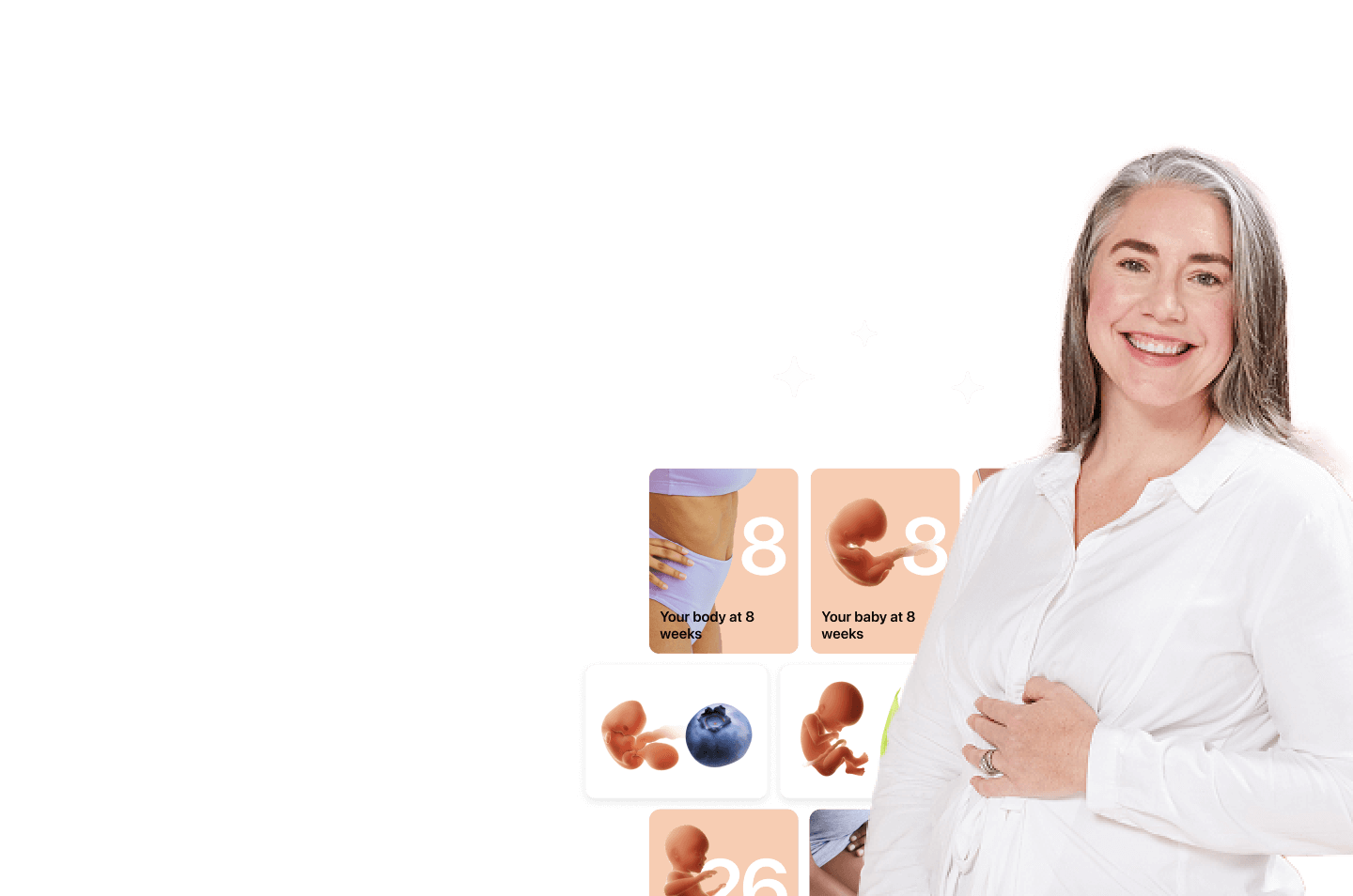Have you noticed your baby uncomfortably tossing and turning through the night? There’s a sound biological reason for this behavior. Read on to find out why restless sleep in newborns is so common and what steps to take.
-
Tracking cycle
-
Getting pregnant
-
Pregnancy
-
Help Center
-
Flo for Partners
-
Anonymous Mode
-
Flo app reviews
-
Flo Premium New
-
Secret Chats New
-
Symptom Checker New
-
Your cycle
-
Health 360°
-
Getting pregnant
-
Pregnancy
-
Being a mom
-
LGBTQ+
-
Quizzes
-
Ovulation calculator
-
hCG calculator
-
Pregnancy test calculator
-
Menstrual cycle calculator
-
Period calculator
-
Implantation calculator
-
Pregnancy weeks to months calculator
-
Pregnancy due date calculator
-
IVF and FET due date calculator
-
Due date calculator by ultrasound
-
Medical Affairs
-
Science & Research
-
Pass It On Project New
-
Privacy Portal
-
Press Center
-
Flo Accuracy
-
Careers
-
Contact Us
Restless Sleep in Newborns: Why Tossing and Turning Is Normal

Every piece of content at Flo Health adheres to the highest editorial standards for language, style, and medical accuracy. To learn what we do to deliver the best health and lifestyle insights to you, check out our content review principles.
Why is your newborn tossing and turning?
For most new parents, their little one’s restless sleep keeps them up at night. But why are babies always tossing and turning? Of the 16 to 17 hours of sleep they get per day, approximately half is devoted to the REM phase. REM sleep proportionately decreases as we age.
Next, let’s take a closer look at the two major types of sleep:
- REM (rapid eye movement) sleep: This light sleep phase involves increased movement, vivid dreams, and rapid eye flickering. This is when your baby’s brain can consolidate memories and enhance their cognitive skills. About 70-80 percent of sleep time is spent in REM sleep in preterm infants and 50 percent in term infants.
- Non-REM (NREM) sleep: This phase can be broken into three stages, with the following characteristics:
- Stage 1 – drowsiness and dozing, drooping eyes that open and close
- Stage 2 – a lighter form of sleep during which they could be easily awakened or startled
- Stage 3 – a deep sleep in which your baby stays quiet and does not move
Similar to adults, babies experience each of these stages in a sleep cycle, progressing from stages 1 through 3. This process repeats multiple times throughout the night.
The average adult sleep cycle lasts between 90 and 120 minutes (with 20 to 25 percent in REM). In contrast, your infant’s sleep cycle lasts only 50 minutes (with 50 percent in REM) until they’re six months old. These shorter cycles and frequent REM phases are what causes restlessness in your baby.
Take a quiz
Find out what you can do with our Health Assistant
Should you pick up your baby when they’re restless?
The short answer is no. As tempting as it may be, picking up your little one every time they make a sound can disrupt their sleep. Newborns naturally cycle through light and deep sleep all night long.
Whenever they enter the REM phase, they instinctively toss and turn or even whimper. This is completely normal; if you leave them alone, they’ll slowly transition back into a deep sleep. Rushing to pick them up every time they’re restless, however, disrupts their sleep cycle.
When will babies start to sleep more soundly?
Counting the days until you and your infant can enjoy longer, more restful sleep? Typically, they sleep for eight to nine hours during the day, then another eight hours at night. But each period of sleep is no longer than three hours, as they cannot store much energy and need to eat frequently.
At the three- to four-month mark, your baby may begin sleeping for five to six hours at a time. Most children experience deeper sleep (eight to 10 hours, uninterrupted) each night as they approach their first birthday. Of course, this varies from one individual to the next.

Tips for helping your baby sleep more soundly
Although your newborn’s sleep cycle doesn’t offer much leeway, there are other strategies for tackling restless sleep. Here are a few tips for developing healthy sleep habits.
Create a bedtime routine
Establish a routine for putting your baby to sleep. This could include a warm bath, breastfeeding, or changing into their pajamas. The more consistently you practice this routine, the more quickly they’ll associate it with bedtime and become drowsy.
Avoid active play or stimulation before bed
Engaging in physical activity close to bedtime overstimulates your child, making it difficult for them to fall asleep. Instead, opt for low-energy activities like reading a book or listening to a lullaby.
Differentiate between night and day
After living in the womb for nine months, newborns can’t yet distinguish night from day. You can help them adapt by allowing lots of natural light into your home in the daytime. At night, dim the lights and switch off bright screens to ease their transition to bedtime.
Put your baby to bed drowsy but awake
Doctors recommend placing your infant in their crib before they’ve actually fallen asleep. If they become accustomed to dozing off in your arms, they may struggle to sleep without you. Always place babies on their backs for sleep or naps. The mattress should be covered with a tightly fitted sheet, and the crib should be free of pillows, blankets, and toys to reduce the risk of SIDS.
Comfort your baby when they cry
Gently pat and soothe a crying baby in the middle of the night to reassure them of your presence and lull them back to sleep.
Many new parents often ask, what causes restless sleep? Shorter sleep cycles in newborns, among other factors, are usually to blame for tossing and turning. The problem resolves as your baby grows, but you may be able to help them adjust by following the tips outlined above.


Hey, I'm Anique
I started using Flo app to track my period and ovulation because we wanted to have a baby.


The Flo app helped me learn about my body and spot ovulation signs during our conception journey.


I vividly
remember the day
that we switched
Flo into
Pregnancy Mode — it was
such a special
moment.
Real stories, real results
Learn how the Flo app became an amazing cheerleader for us on our conception journey.
References
“Default - Stanford Children's Health.” Stanford Children's Health - Lucile Packard Children's Hospital Stanford, www.stanfordchildrens.org/en/topic/default?id=newborn-sleep-patterns-90-P02632.
“Infant Sleep.” Department of Neurology, 18 Aug. 2020, www.columbianeurology.org/neurology/staywell/infant-sleep.
“Stages of Newborn Sleep.” HealthyChildren.org, www.healthychildren.org/English/ages-stages/baby/sleep/Pages/Phases-of-Sleep.aspx.
"Sleep". Healthychildren.Org, 2020, https://www.healthychildren.org/English/ages-stages/baby/sleep/Pages/default.aspx.
“Back to Sleep, Tummy to Play.” HealthyChildren.org, www.healthychildren.org/English/ages-stages/baby/sleep/Pages/Back-to-Sleep-Tummy-to-Play.aspx.
Grigg-Damberger, Madeleine M. “The Visual Scoring of Sleep in Infants 0 to 2 Months of Age.” Journal of clinical sleep medicine: JCSM: official publication of the American Academy of Sleep Medicine vol. 12,3 (2016): 429-45. doi:10.5664/jcsm.5600
“Help Your Baby Sleep through the Night.” Mayo Clinic, Mayo Foundation for Medical Education and Research, 2 Sept. 2020, www.mayoclinic.org/healthy-lifestyle/infant-and-toddler-health/in-depth/baby-sleep/art-20045014.




